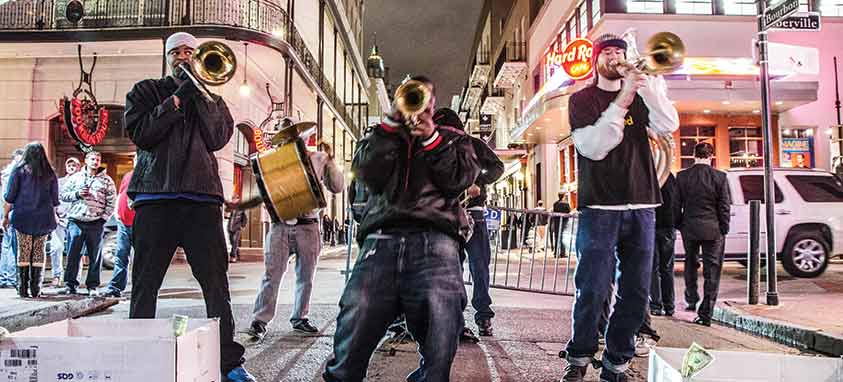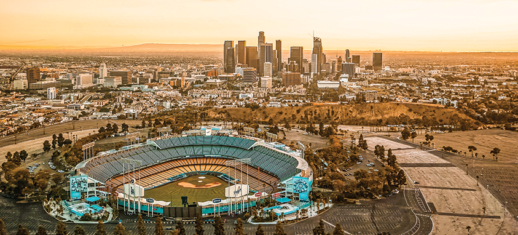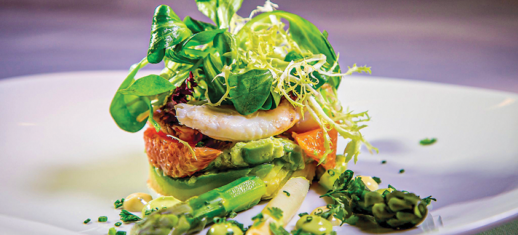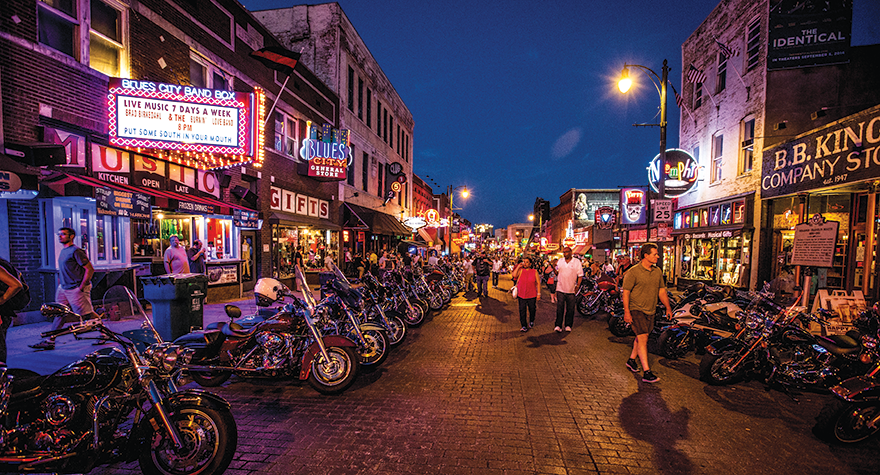Street musicians, New Orleans
Louisiana’s history and art museums spice up events
Most Americans are first introduced to Louisiana through a school lesson: the purchase by the United States of the vast Louisiana Territory from the French in 1803.
After that, many folks get a firsthand taste of Louisiana when they attend a meeting or trade show. And, of course, Mardi Gras and music festivals are huge draws, adding to the popularity of this culturally rich state.
This unique cultural crossroads includes Native American, Spanish, French, British, West African and modern American cultures. As a result, the primary meeting sites possess unique historic, cultural and artistic offerings that make conventions and incentive programs more interesting and memorable for attendees.
New Orleans, for example, was named the No. 5 Big City in the United States, according to Conde Nast Traveler’s Reader’s Choice Awards, which were announced in October.
 Traditional jambalaya
Traditional jambalaya
“Whether it’s our incredible cuisine, music, unique culture or the hospitality New Orleanians show our guests, visitors to New Orleans are discovering that this place is an authentic, world-class destination,” says Stephen Perry, president and CEO of New Orleans Convention and Visitors Bureau. “Discriminating travelers appreciate the things that distinguish New Orleans from other American cities.”
Besides being the state capital, Baton Rouge is one of America’s most beloved college football towns as home to Louisiana State University. Shreveport provides its own brand of entertainment, with casinos dotting the banks of the Red River. And Lafayette is the place to go for Cajun food.
Who’s hungry?
New Orleans
 Saint Louis Cathedral, New Orleans
Saint Louis Cathedral, New Orleans
Set between the convention center district and the many business hotels within the French Quarter, the Warehouse-Arts District is the heart of New Orleans’ art scene. But the catalyst that brought initial momentum to this area back in 2000 was a venue focused not on art or culture, but rather an enormous moment in history.
National WWII Museum is housed in three buildings, each arranged around central themes of the war. Besides the more than 100,000 artifacts on display—including actual planes that participated in combat—many other exhibits offer visitors the opportunity to experience the war through personal accounts from people who lived through it.
There are a dozen gathering spaces that groups can rent for receptions with as few as 20 people, or as many as 1,000-plus. The largest space is US Freedom Pavilion: The Boeing Center, with an enormous Boeing B-17 Flying Fortress hanging directly overhead.
This pavilion also offers the interactive submarine experience “Final Mission: The USS Tang.” Based on historical events, the experience allows visitors to occupy the positions of the crew and perform the battle actions as they unfolded in the Pacific Ocean.
What’s more, other theaters in the museum host short films that guests can take in during a reception.
As for art and culture, the top venue in the Warehouse-Arts District is Ogden Museum of Southern Art. With works from artists associated with 15 Southern U.S. states, the Ogden has more than 4,000 paintings, drawings, photos and sculptures that embody the visual heritage and history of the American South from 1733 to present. The museum’s main building, Stephen Goldring Hall, is a five-story structure with a glass facade and “floating” staircase. It holds up to 700 people for receptions.
 Mardi Gras faces
Mardi Gras faces
Ernest N. Morial Convention Center is only five blocks away. Just one block farther into the district sits Contemporary Arts Center New Orleans (CACNO), which can host receptions for up to 500 people in spaces featuring high ceilings plus exposed beams and brick. CACNO offers not only galleries with modern paintings and sculpture, but also frequent live performances by local musicians, dancers and visual artists. Surrounding CACNO and the Ogden are many small, independent art galleries as well as restaurants, making the district perfect for dine-arounds.
A short bus ride—or a 30-minute narrated streetcar ride—from the convention district is the lush, 1,300-acre New Orleans City Park. It’s home to the 105-year-old New Orleans Museum of Art (NOMA), Besthoff Sculpture Garden and New Orleans Botanical Garden (open year-round). NOMA boasts more than 40,000 art objects, with a particular focus on American, French, African and Japanese works. The museum can host up to 1,200 people for a reception.
 New Orleans Museum of Art
New Orleans Museum of Art
Tara Letort, director of group public relations for New Orleans Convention and Visitors Bureau, suggests that planners for smaller groups also consider a few other museums around town: The Historic New Orleans Collection, Museum of African American Art, Guardians Institute featuring the Mardi Gras Indians Hall of Fame and VooDoo Spiritual Temple featuring Priestess Sallie Ann Glassman.
Letort also notes that there are four sizable historic homes within the city that can host catered group events: Beauregard Keyes House, Hermann-Grima House and Old Ursuline Convent are set in the French Quarter, while the Elms Mansion is in the Garden District. Nine larger, plantation-style homes just outside the city are available to groups, as well.
Saint Louis Cathedral is a must see. It is the oldest cathedral in North America, dating to 1727 and regarded as one of the city’s top landmarks.
Baton Rouge
 Exhibition at LSU Museum of Art, Baton Rouge
Exhibition at LSU Museum of Art, Baton Rouge
Just 80 miles upriver from New Orleans is Baton Rouge, the state capital as well as home to Louisiana State University. The area has been inhabited since 8000 B.C. French explorer Sieur d’Iberville led an exploration party up the Mississippi River in 1699 and named the area for a huge tree stripped of bark and painted red to designate the border between local tribes’ lands.
During the 20th century, one of the iconic figures in Louisiana was Gov. Huey Long. The Old Governor’s Mansion, built in 1930 during Long’s tenure as governor, served as the official residence to nine Louisiana governors and their families until 1961. The Georgian-style mansion is listed on the National Register of Historic Places and serves as the headquarters for the Foundation for Historical Louisiana. Designed by Long with entertaining in mind, the “Louisiana White House” can accommodate 450 people for a reception.
 The Old Governor’s Mansion, Baton Rouge
The Old Governor’s Mansion, Baton Rouge
Capitol Park Museum is a 69,000-square-foot facility set above the Mississippi River. It features rotating exhibits on the diverse aspects of Louisiana history, industry and culture. It also houses two permanent exhibits—Grounds for Greatness: Louisiana and Nation and Experiencing Louisiana: Discovering the Soul of America. Both highlight nationally significant aspects of Louisiana’s history and unique features of the state’s culture.
The facility features a convertible indoor-outdoor pavilion with high ceilings, overlooking the 460-foot-tall capitol building. Receptions can accommodate up to 350 people.
Open since 1962, LSU Museum of Art moved to the 13,000-square-foot Shaw Center for the Arts in 2005. The only dedicated art museum in the city, its collection has 6,500 objects ranging from an impressive selection of Chinese jade to a comprehensive collection of Louisiana art. Its fifth-floor reception space holds 400 people, while the sixth-floor rooftop accommodates 300.
For groups of up to 250 that would prefer modern art and cultural programming, Baton Rouge Gallery Center for Contemporary Art (BRG) is the oldest operating artists’ cooperative in America. BRG offers new contemporary art exhibitions on a monthly basis.
Shreveport-Bossier
 Southern University Museum of Art at Shreveport
Southern University Museum of Art at Shreveport
Inhabited for centuries by the indigenous Caddo people, the land that is now Shreveport was purchased from the tribe in the 1830s by a shipping company because the Red River was made navigable by Capt. Henry Miller Shreve of the U.S. Army Corp of Engineers. The city was a center for steamboat commerce and saw some late Civil War skirmishes before morphing into a banking and business center featuring an entire downtown district that’s on the National Register of Historic Places.
Included in that historic district is the 1,536-seat Strand Theatre, built in 1925. Besides Broadway productions, concerts and other public events, the theater can be used by business groups for receptions and private performances by notable local blues and jazz musicians.
 Shreveport Municipal Auditorium
Shreveport Municipal Auditorium
A few blocks away is another protected landmark: the acoustically perfect Shreveport Municipal Auditorium, which seats more than 3,000.This Art Deco masterpiece is where 19-year-old Elvis Presley made his broadcast debut in 1954. Backstage tours are available during receptions held in the 6,300-square-foot arena space.
As for museums in town, Louisiana State Exhibit Museum features more than 20 large dioramas focused on the Caddo people. It also contains hundreds of original artifacts from the tribe’s day-to-day activities across more than 1,000 years. Many of them were found nearby at a rich archaeological site designated as a UNESCO World Heritage Site.
In the heart of downtown is Southern University Museum of Art at Shreveport (SUMAS), which showcases hundreds of paintings, drawings, sculptures and other items that provide an understanding of culture in Africa and in the African-American diaspora. A few minutes south of the city center, Robert W. Norton Art Gallery features more than a thousand 19th- and 20th-century American and European art pieces in 24 exhibit rooms.
Surrounding this museum are 40 acres of manicured gardens bursting with 15,000 species of plants and trees, making an outdoor reception possible almost throughout the year.
Lafayette
 Paul and Lulu Hilliard University Art Museum, Lafayette
Paul and Lulu Hilliard University Art Museum, Lafayette
Few people who live outside of Louisiana know the differences between Cajun and Creole culture. Here’s a very brief primer: Cajun encompasses the lifestyle of the descendants of French settlers who fled from Acadia (Maritime Canada) to Southwest Louisiana during the French and Indian War. Creole is a unique blend of French culture with Spanish, African-American and Native-American influences.
Attendees of meetings held in Lafayette go home with a clear understanding of each culture, along with pleasant memories of how they learned their lesson.
“As the birthplace of Cajun and zydeco music, and home to the best Cajun and Creole cuisine in the world, visitors can explore how the traditions of our ancestors are still tied to everything we do,” says Ben Berthelot, president and CEO of Lafayette Convention & Visitors Commission.
 Vermilionville, Lafayette
Vermilionville, Lafayette
At Vermilionville, a heritage and living-history museum village, guests can move among 19 structures including seven original homes filled with artifacts reflecting local residents’ lives between 1765 and 1890. Historical interpreters in period dress occupy each structure to educate attendees, while a replica cotton mill serves as the base for up to 350 people to enjoy a reception or buffet-style meal. Larc’s Acadian Village is another such village restoration, complete with 19th-century shops, a chapel and a large pavilion for meals.
The major art showcase in Lafayette is the 33,000-square-foot Paul and Lulu Hilliard University Art Museum. It comprises a two-story glass-and-steel structure that faces the museum’s original building, a replica plantation home. Between the two is a 7,000-square-foot plaza with a lighted water wall. The museum’s collection consists of European, Asian and American art from the 18th century to the present.
In the heart of downtown is Lafayette Science Museum, with an all-digital planetarium as well as a new Acadiana Music Experience featuring music, photos and memorabilia of traditional and contemporary artists in Cajun music, zydeco, swamp pop, country, blues and more. Lastly, groups looking to have a meal or reception with a musical focus can hear live Cajun and zydeco performances at restaurant/bars such as Randol’s and Blue Moon Saloon.
Rob Carey is a business journalist and principal of Meetings & Hospitality Insight, a content marketing firm for the group-business market.
Major Meeting Venues
Baton Rouge
Baton Rouge Marriott
Midcity location; Cajun restaurant; short walk to Sullivan’s Steakhouse; 299 guest rooms; 25 meeting rooms across 30,000 sq. ft.
Cook Hotel and Conference Center at Louisiana State University

On edge of LSU campus, 2.5 miles south of convention center and Capitol; 128 guest rooms; eight meeting rooms; more than 13,000 sq. ft. of event space, including ballroom that can accommodate 500.
Hilton Baton Rouge Capitol Center
AAA Four Diamond property in historic 1927 building; near River Center and Louisiana Art and Science Museum; 291 guest rooms; 20,000 sq. ft. of meeting space.
Louisiana Art and Science Museum
Set on riverfront just north of River Center and USS Kidd Veterans Museum; evening special events for up to 500 guests include overhead show in planetarium theater.
Renaissance Baton Rouge
Set between Perkins Rowe district and Mall of Louisiana; 256 guest rooms; 13,000 sq. ft. of space, including 7,488-square-foot ballroom.
River Center
Multipurpose facility; more than 100,000 sq. ft. of exhibit space, 24,000 sq. ft. of meeting space; 8,900-seat arena; 1,900-seat theater.
Lafayette
DoubleTree Hilton Lafayette
22,000 sq. ft. of meeting space; 14-foot ceilings in grand ballroom; 1,000-square-foot pool deck overlooks Vermilion River; 327 guest rooms and suites.
Lafayette Convention Center and Cajundome
Opened in 2002; two-level facility; 37,300-square-foot exhibit area; 20,000 sq. ft. of meeting/banquet space; adjacent to 18,000-seat dome.
Ramada Lafayette Conference Center
14,000 sq. ft. of meeting space, including 2,000 sq. ft. of exhibit space; banquet space for up to 700; largest indoor pool in the city; 242 guest rooms and suites.
Wyndham Garden Lafayette
Free shuttle to airport and local attractions; 14,000 sq. ft. of meeting space includes 6,000-square-foot ballroom; 290 guest rooms and suites.
New Orleans
Ernest N. Morial Convention Center
1.1 million square feet of exhibit space; 140 meeting rooms; 4,000-seat auditorium; 60,300-square-foot Great Hall Ballroom opened in 2013; new headquarters hotel to be completed by mid-2018.
Hilton New Orleans Riverside

Adjacent to the new Outlets at the Riverwalk; walk to convention center and Harrah’s Casino; 1,622 guest rooms; 130,000 sq. ft. of meeting space includes 27,000-square-foot ballroom.
Hotel Monteleone
AAA Four Diamond hotel built in 1886 in middle of French Quarter; famous revolving Carousel Bar; rooftop deck with heated pool and city views; 570 guest rooms; 24,000 sq. ft. of meeting space.
Hyatt Regency New Orleans
In central business district, one block from Mercedes-Benz Superdome; 200,000 sq. ft. of conference space with two ballrooms; 1,193 guest rooms; acclaimed Borgne Restaurant.
Loews New Orleans
Across street from Harrah’s New Orleans and one-quarter mile to convention center and French Quarter; 285 guest rooms; 17,000 sq. ft. of meeting space, with city views; Piazza d’Italia outdoor venue adjacent to hotel.
Mardi Gras World
One block south of convention center; parade floats constructed onsite year-round, with tours available; 30,000-square-foot ballroom; mock antebellum mansion with 17,000 sq. ft. of event space.
National World War II Museum
Multibuilding venue in Warehouse-Arts District; interactive submarine exhibit; planes; 4-D theater; Road to Tokyo exhibit; space for up to 1,000 people in US Freedom Pavilion: The Boeing Center.
New Orleans Marriott
On edge of French Quarter; short walk to top restaurants: Mr. B’s, Galatoire’s, Palace Cafe and K-Paul’s Louisiana Kitchen; House of Blues; 1,333 guest rooms; 86,848 sq. ft. of meeting space; event space for up to 3,200.
Sheraton New Orleans
Short walk to Bourbon Street and Harrah’s Casino; rooftop pool/sun deck with panoramic views of French Quarter and Mississippi River; 105,700 sq. ft. of meeting space; 1,110 guest rooms.
The Westin New Orleans Canal Place
Adjacent to upscale Shops at Canal Place and two blocks from river; rooftop deck with heated pool; 437 guest rooms; 26,000 sq. ft. of meeting space, with great city views.
Shreveport
Hilton Shreveport

Connected to convention center; 313 guest rooms; 10-person boardroom; two breakout rooms hold 50 each; rooftop fitness center; walking distance to riverfront casinos.
Horseshoe Bossier City
Across Red River from Sam’s Town; Riverdome offers 11,522 sq. ft. of customizable space with stage and 36-foot ceilings; boardroom; two dedicated meeting rooms for up to 80 people.
Sam’s Town Hotel & Casino
On riverfront, four blocks from convention center; 514 guest rooms; 18,000-square-foot ballroom divisible by eight; outdoor pool deck hosts receptions.
Shreveport Convention Center
Second-largest convention center in Louisiana, with 350,000 sq. ft. of meeting and exhibit space; 95,000-square-foot column-free exhibition hall.




